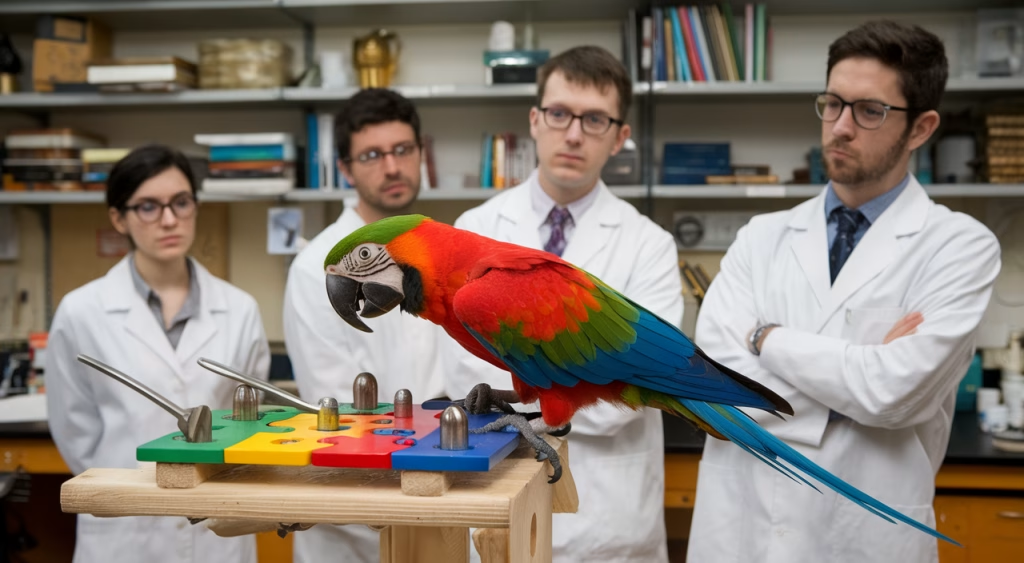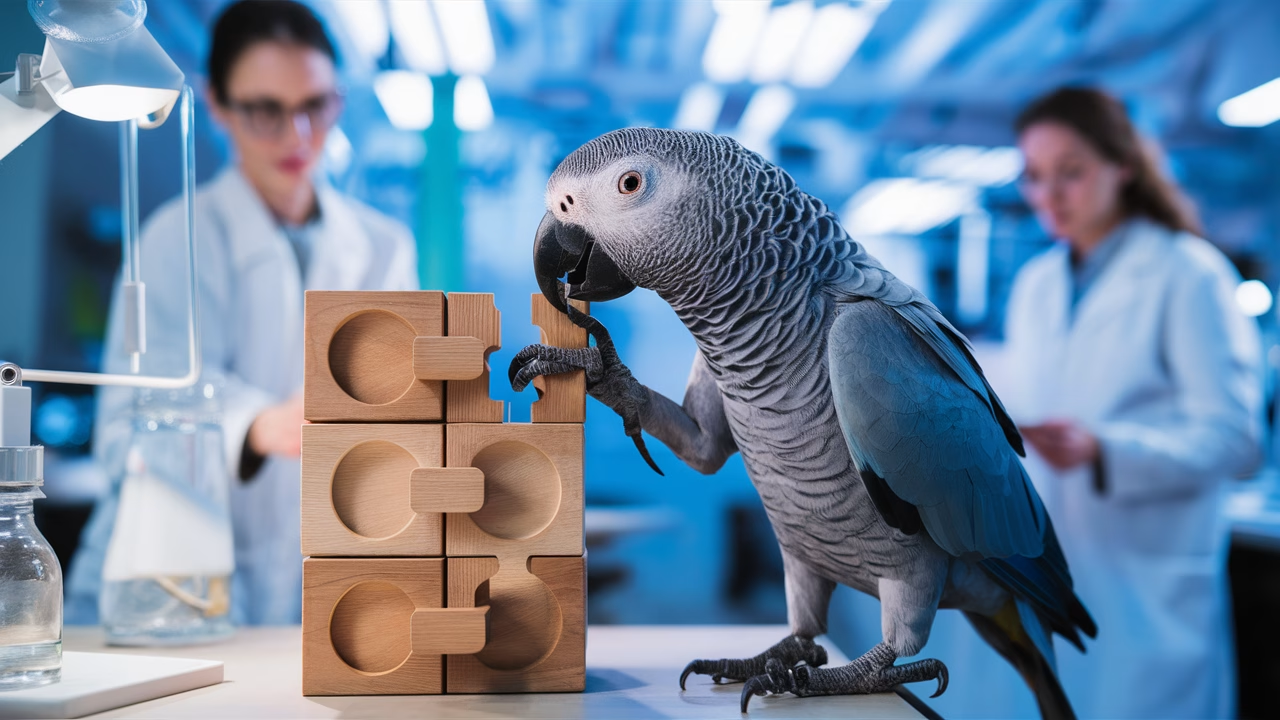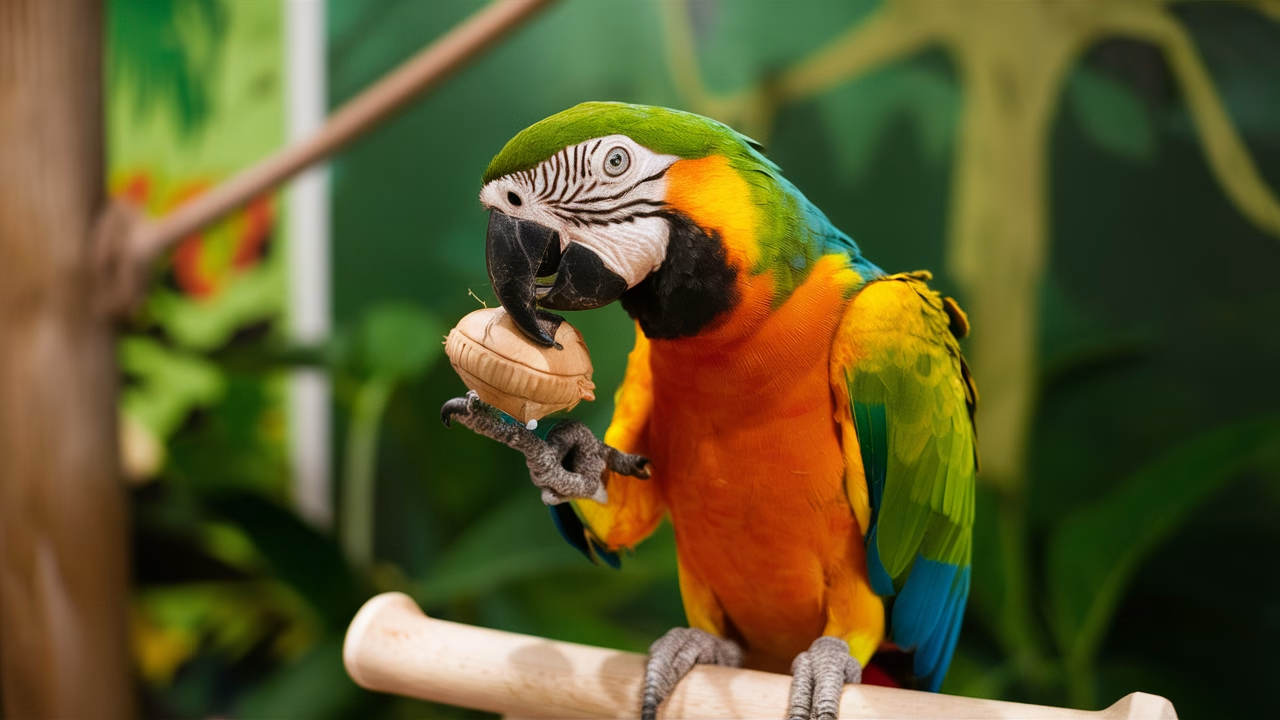Can Parrots Outsmart a 5-Year-Old? Exploring the Truth Behind Parrot Intelligence
Yes — and it’s not an exaggeration. Certain parrot species, most notably the African Grey, have been shown to demonstrate cognitive skills comparable to those of young children. From tool use and deception to understanding abstract concepts, parrots are redefining what it means to have a “bird brain.”
- Parrot Intelligence rivals that of a 5-year-old child in areas like counting, categorization, and problem-solving.
- Parrots demonstrate advanced emotional intelligence, showing signs of empathy, grief, and social bonding.
- They have an impressive memory span, remembering specific events and relationships for years.
- Parrots use tools, speak contextually, and even manipulate situations — a sign of strategic thinking.
- Each species, from the chatty African Grey to the intuitive Kea, brings unique intelligence traits to the table.
The Advanced Intelligence of Parrots
Why Do Crocodiles Cry When Eating? The Shocking Truth Behind Crocodile Tears
Problem-Solving Skills in Parrots
The phrase “bird brain” used to be an insult, but parrots are completely changing that narrative. When you observe parrot intelligence in action, their problem-solving abilities truly shine. In controlled experiments, Goffin’s cockatoos tackled multi-lock puzzle boxes containing food rewards. They not only figured out each intricate step — including pulling levers and turning wheels — but improved their efficiency in subsequent attempts.
Alex the African Grey became legendary in the scientific community by creating the word “bannery” for apple — a clever combination of banana and cherry based on taste similarity. He could count objects, identify shapes and colors, and even expressed boredom by requesting to return to his cage. His remarkable achievements demonstrate that advanced problem-solving skills in parrots represent genuine cognitive sophistication, not just random behaviors.
Social Intelligence and Relationships
Parrots possess extraordinary social intelligence that rivals many mammals. In their natural habitats, flock dynamics involve complex hierarchies and relationships that would make any soap opera jealous. These intelligent birds form strategic alliances, remember past conflicts, and engage in what researchers describe as information sharing — behaviors that showcase sophisticated parrot social intelligence.
This intelligence extends far beyond simple mimicry. Wild parrots actively learn and replicate the dialects of neighboring flocks to facilitate acceptance and cooperation. Think of it as their version of learning a new language to fit in. They’ve been observed comforting distressed flock members and even planning coordinated responses against threats. These calculated, emotionally-driven behaviors reveal the depth of their cognitive abilities.
Emotional Depth and Bonding
When we examine parrot emotions, we discover striking similarities to human emotional experiences. Parrots develop profound emotional bonds with both their avian companions and human families. If you’ve ever lived with a parrot, you’ve likely witnessed their grief during separations, their excitement upon reunions, and their constant need for meaningful interaction.
Research confirms that parrots can experience clinical depression, particularly in emotionally impoverished environments. They may engage in feather plucking due to stress or loneliness, or become withdrawn when their established routines face major disruptions. These responses demonstrate genuine emotional complexity — encompassing grief, joy, companionship, and what scientists recognize as empathy. The emotional depth and empathy that parrots display aren’t just anecdotal observations; they’re scientifically documented traits that reveal their remarkable inner lives.
Remarkable Memory of Parrots
The memory capacity of parrots is absolutely extraordinary and often exceeds human expectations.
Parrot memory enables them to retain far more than simple words or trained behaviors — they remember specific individuals, daily routines, and complex problem-solving strategies from months or even years ago. Scientists have documented fascinating cases of parrots repeating overheard conversations from previous seasons, sometimes delivering them at surprisingly appropriate (or inappropriate) moments. Additionally, parrots can recall the exact locations where they’ve hidden food or favorite toys, using sophisticated mental mapping abilities.
They integrate this impressive memory with their social intelligence, meaning they remember which people treated them kindly — and which ones didn’t. It might seem vindictive, but it’s actually incredibly sophisticated cognitive processing.
Curiosity and Learning Capacity
Curiosity drives everything remarkable about parrot intelligence. These birds possess an innate curiosity that fuels continuous learning throughout their lives. When researchers study juvenile parrots, they observe extensive “play learning” behaviors, where young birds explore their environment purely for understanding. They deliberately drop objects to study gravity, manipulate doors and latches because they can, and tap various surfaces to analyze different sounds and textures.
Some parrots have successfully learned to interact with tablets, selecting specific images, mastering new digital tasks, and even copying complex audio patterns. This goes beyond simple repetition — it represents active, engaged learning driven by genuine curiosity. This capacity includes what researchers call “self-directed teaching,” where parrots quietly practice new vocalizations (like students rehearsing privately) before confidently performing them publicly.
Comparison: Parrot Intelligence vs Other Smart Birds
| Feature | Parrots | Crows | Pigeons |
|---|---|---|---|
| Tool Usage | Yes (bent wire, sticks) | Yes (hook tools, water displacement) | Limited |
| Problem Solving Complexity | High (multi-step puzzles) | High | Moderate |
| Social Intelligence | Exceptionally High | Moderate | Low |
| Emotional Depth | High | Moderate | Low |
| Vocal Learning | Advanced (contextual) | Low | Moderate |
Frequently Asked Questions (FAQs)
Are parrots smarter than dogs?
In many ways, yes. While dogs often win in emotional attunement and obedience, parrots excel in memory, vocal learning, and abstract reasoning. Each has unique strengths — but parrots showcase more human-like cognition in lab settings.
Can parrots really talk with understanding?
Unlike mere mimicry, many parrots — especially African Greys — use words with context. Alex the parrot used over 100 words to describe colors, numbers, and even express boredom or preference.
Why do parrots mimic human speech?
Parrots are social learners. In the wild, vocal mimicry helps them fit into flocks. In captivity, humans become their “flock,” so they mimic our speech for bonding and interaction.
Which parrot species are the smartest?
African Grey parrots top the list, followed closely by Amazon parrots and Kea parrots. These species demonstrate exceptional abilities in memory, reason, and communication.
How can I keep my parrot mentally stimulated?
Provide puzzle toys, rotate activities, teach new tricks regularly, and include social interactions. Mental stimulation prevents boredom and supports emotional well-being.
Do parrots feel love?
While we can’t define it in strictly human terms, parrots show strong affection, preferring certain individuals, mourning losses, and expressing joy — behaviors akin to love.
Can parrots recognize faces?
Yes. Studies confirm parrots remember and distinguish between individual human and avian faces for years, associating them with specific experiences.





